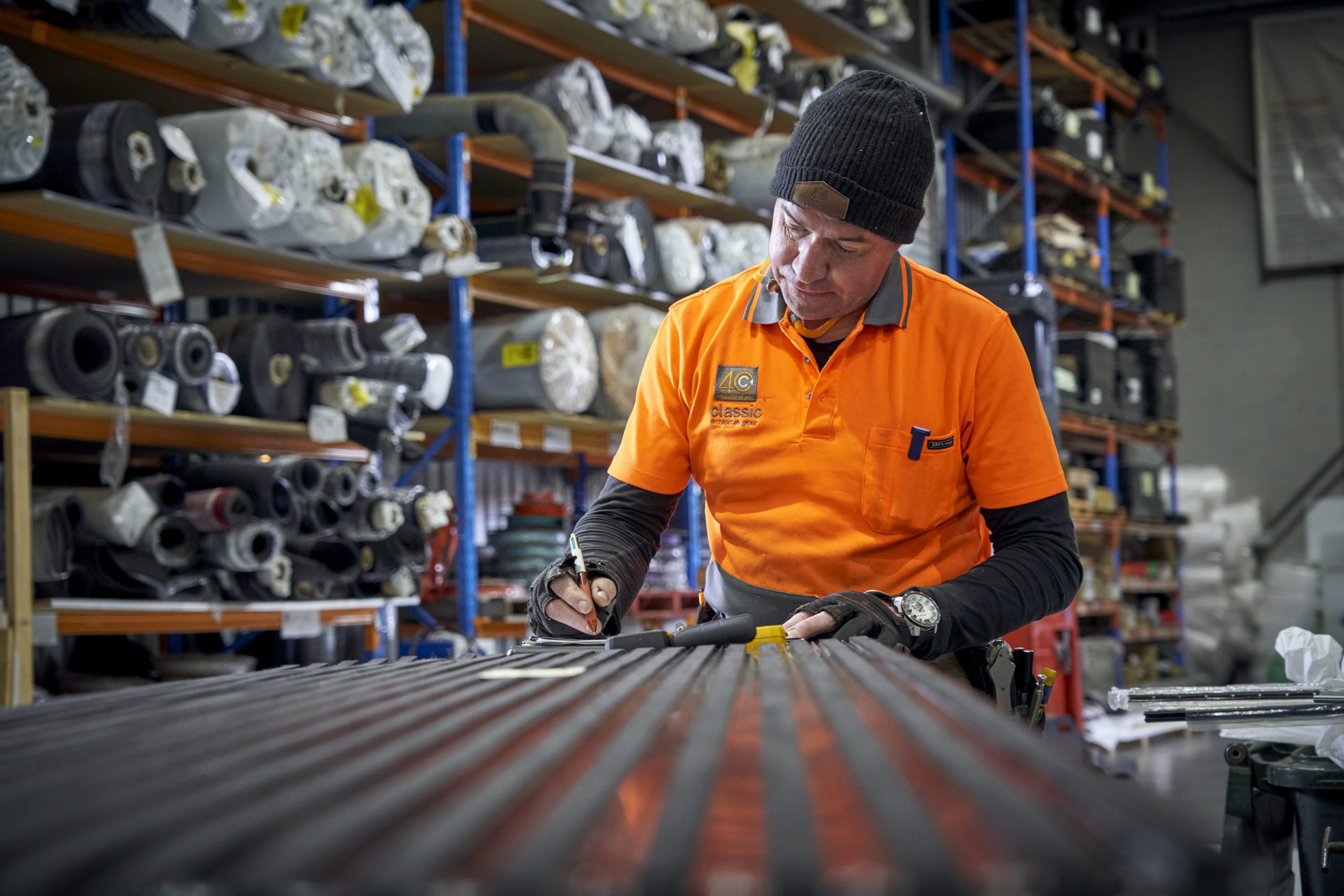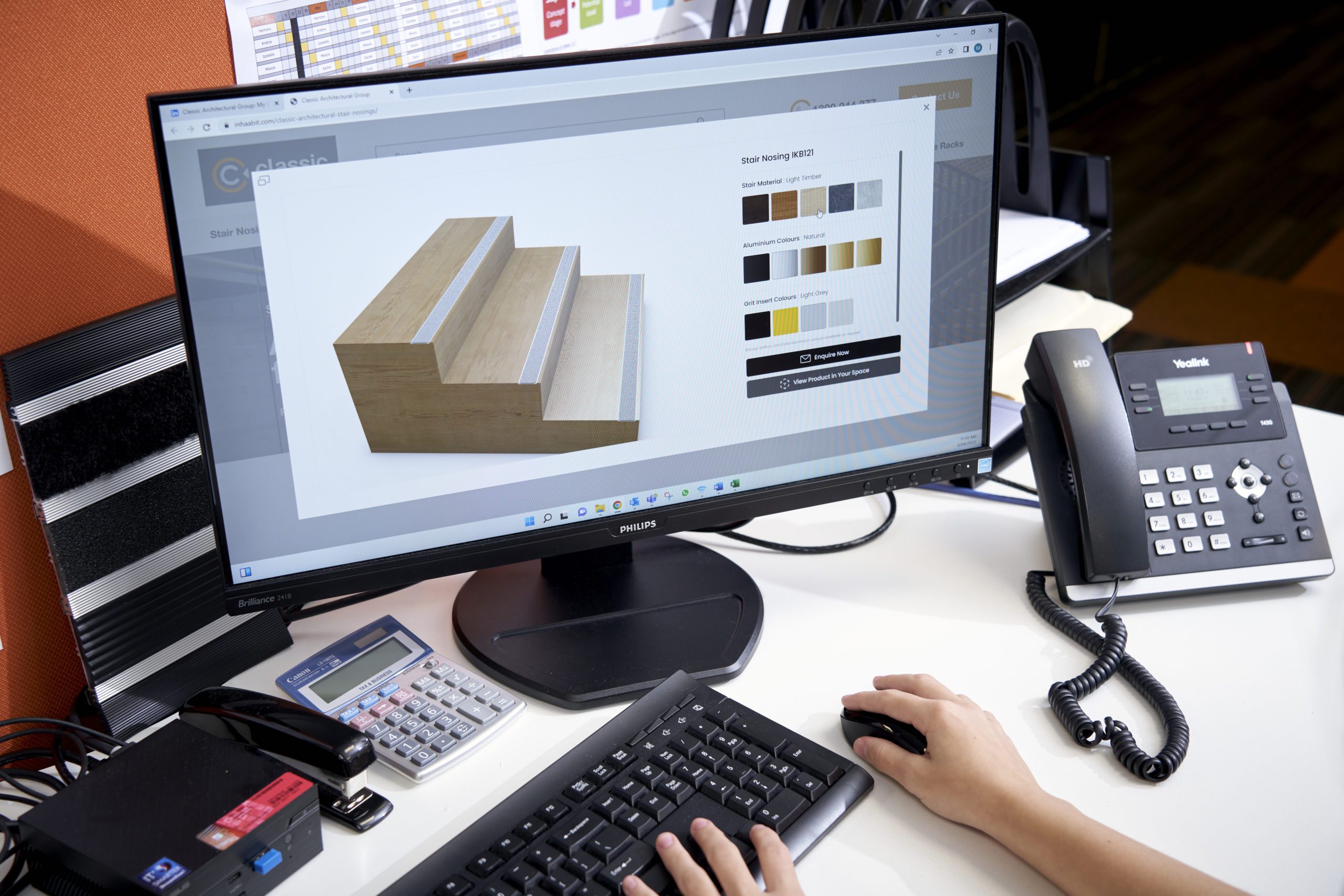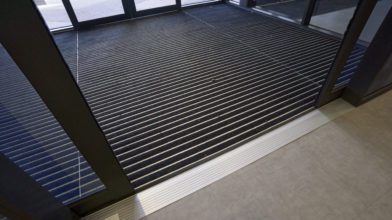Uphold the safety and compliance of your facility with regular maintenance and repairs.
Whether you’re a facility manager at a shopping centre, an apartment building or a sports stadium, it’s essential that you have your i’s dotted and your t’s crossed when it comes to health and safety in your building. Upholding the safety of site staff and public visitors, regularly scheduled maintenance and repairs are the keys to preventing and reducing the risk of slip, trip and fall incidents.
Safe Work Australia reported that in 2020-2021, 23% of all serious workplace injury claims were due to falls, trips and slips. This is a total of 30,039 compensation claims. This can be due to environmental factors such as poorly designed or maintained walkways and slippery surfaces following rain or spills.
Aside from minimising the risk of slips, trips and falls, the routine upkeep of your stair and floor safety also helps with enhancing your building’s cleanliness and longevity. By assessing if current access/safety features in heavy-traffic areas need to be replaced, you’ll also have the opportunity to update the aesthetics of your space. From new indoor and outdoor entry matting to contemporary stainless steel tactiles and anti-slip brass stair nosings, there are many ways to elevate your facility’s presentation and ensure the continued patronage of valued visitors.
Why is maintenance important for commercial public safety?
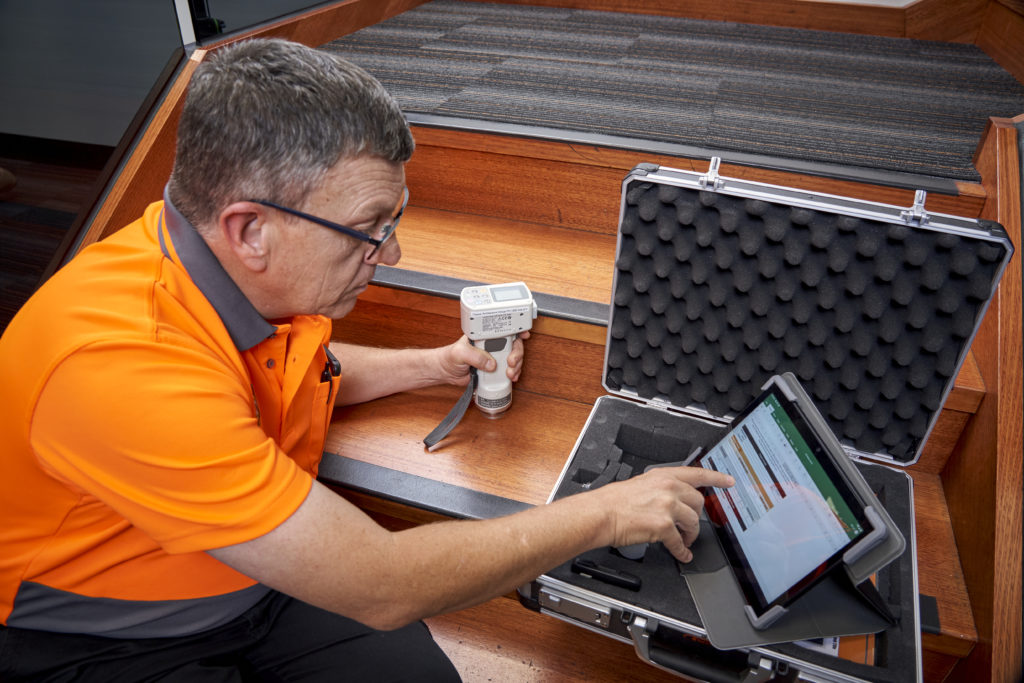
Preventative planning and maintenance play a pivotal role in public safety and it is your duty of care to ensure your facility is well-maintained, free of hazards and safe to access. Constant reactive maintenance is not only time-consuming and stressful but can also pose a larger financial risk.
Rather than waiting for assets to break down and cause unnecessary inconveniences, you can proactively allocate funds towards ongoing site checks and maintenance to ensure compliance with Australian floor safety standards (AS and NCC), while minimising the risk of costly injury claims occurring onsite. Learn more about the importance of floor safety.
What to inspect in your flooring/surfacing maintenance check
Inspecting your flooring and surfaces is an important part of any preventative maintenance process and mandatory for compliance with AS1428, NCC, and any applicable Safe Work Australia requirements. To cover your bases, you should follow a two-pronged approach of assessing the condition of products to make sure they are still fit for purpose and determining whether they require standard maintenance or complete replacement.
As part of your flooring/surfacing maintenance check, we highly recommend you to closely assess the condition and compliance of your entrance matting, stair nosings and tactiles to ensure the safety of people passing through.
1. Entrance Matting
If your building sees high levels of in-and-out foot traffic, commercial entrance mats are a great investment for keeping your building’s interior presentable while reducing the risk of slips, trips and falls by trapping dirt and moisture at the door. Creating an aesthetically pleasing entranceway, Safe Work Australia also requires businesses to eliminate the risk of slips, trips and falls “so far as is reasonably practicable” which also saves you from potential costly payouts.
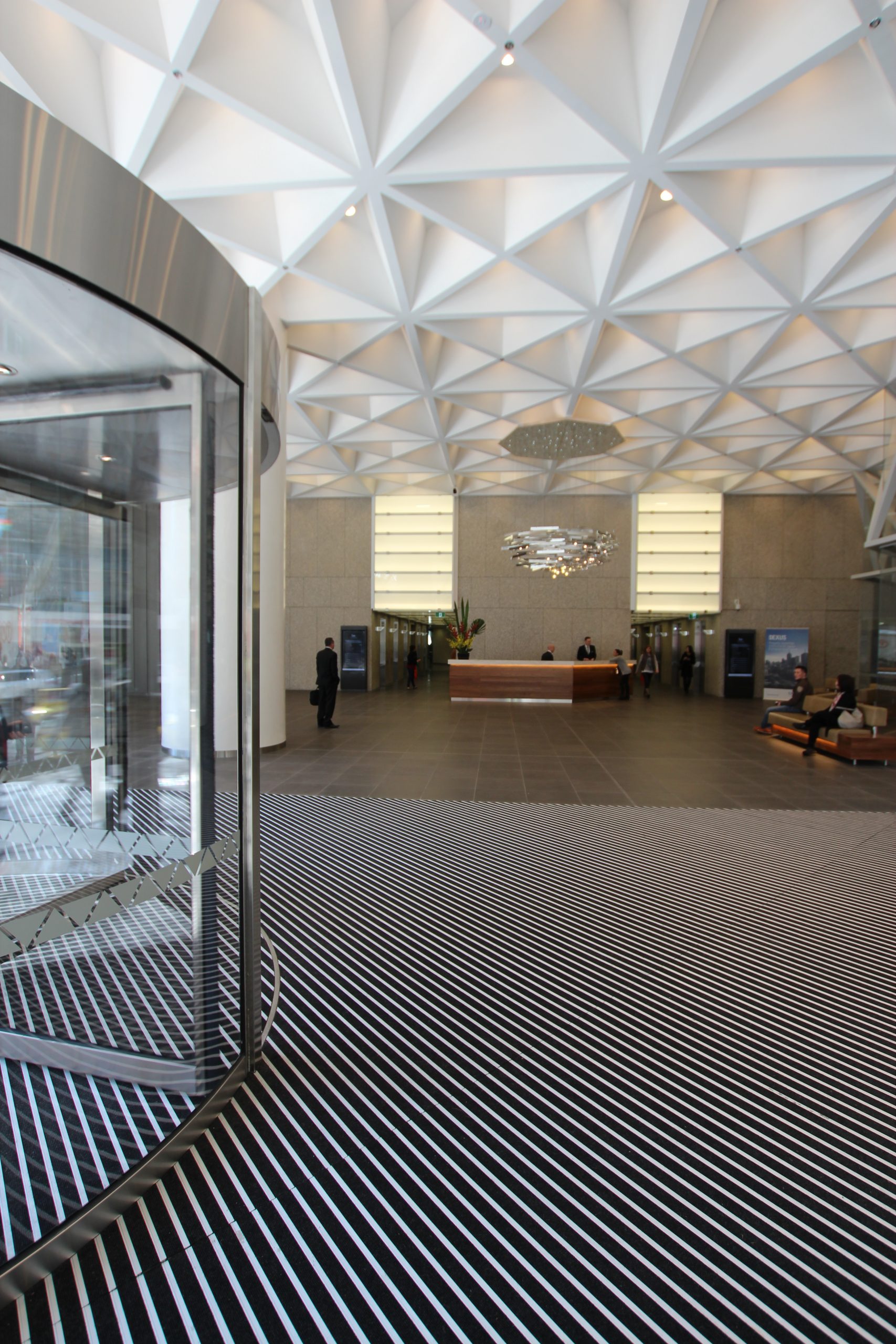
Here is a maintenance check for entrance matting:
- Check if the entrance matting is securely installed.
- Ensure mats retain anti-slip properties.
- Inspect for wear and tear affecting dirt/moisture retention.
- Confirm mats are aesthetically pleasing and fit for purpose.
- Replace mats that no longer meet safety standards.
2. Stair nosings
Installed on the ‘nose’ of a step, stair nosings provide an anti-slip surface and can be susceptible to falling off due to wear and tear over time. They are an AS1428.1 general requirement, providing access for people with vision impairments and disabilities with confident and safe access when navigating stairs. In particular, stair nosings with a luminescent insert make the step edge more visible, a crucial visual aid for partially sighted people or in situations of power failure.
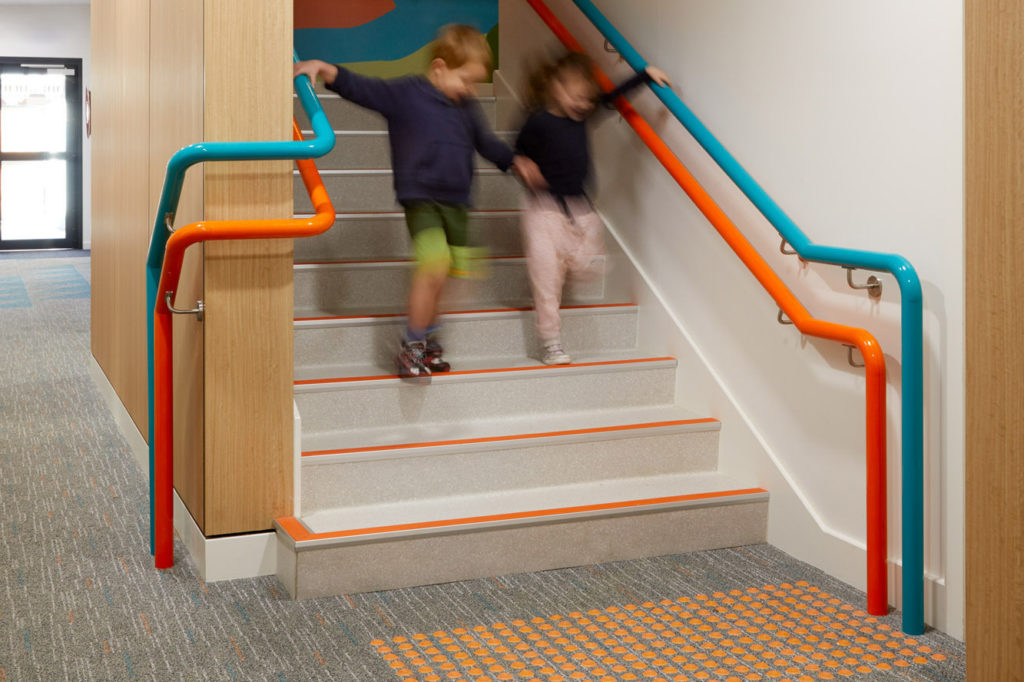
Here is a maintenance checklist for stair nosings:
- Check that stair nosings are securely fixed, without loose edges.
- Inspect for signs of excessive wear, damage, or missing parts.
- Confirm luminescent inserts are visible and functional.
- Test Slip Resistant Ratings.
- Check LRV compliance.
For more information on the application of stair nosings, please refer to our Compliance Guides.
3. Tactile indicators
Warning and directional tactile surface indicators are often installed across a range of public spaces including stairways, escalators, passenger conveyors, ramps and areas that lack suitable barriers, to provide adequate warning of impending hazards and orientation prompts. Complying with AS1428.4.1:2009, this is a particularly crucial navigator and environmental cue for those with vision impairments. As with stair nosings, tactile indicators also provide a luminance contrast to further empower the visually impaired to navigate built surroundings with confidence.
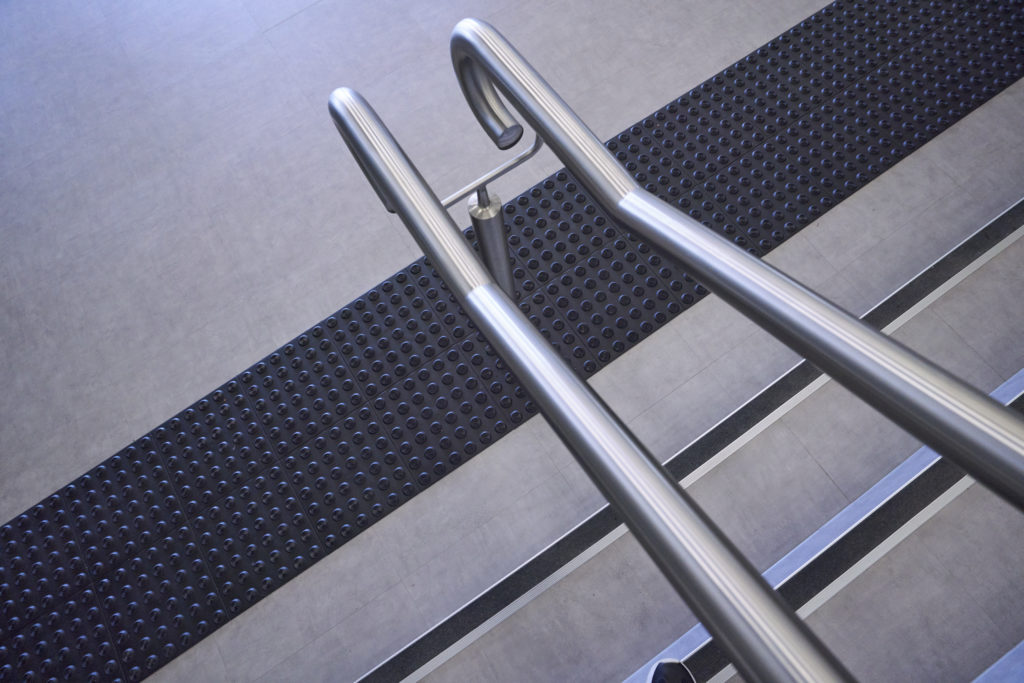
Here is a checklist for tactile indicators:
- Inspect all tactile indicators for missing studs or worn tiles.
- Ensure proper placement as per AS1428.4.1:2009 guidelines.
- Check luminance contrast for visibility in low-light conditions.
- Verify that tactile indicators are installed in all required areas.
- Replace any damaged or non-compliant tactile indicators.
Discover where tactile indicator studs are commonly used.
The top 5 benefits of fixing and replacing floor safety products
As a facility manager, you can allocate the current budget to fix and replace your floor safety products before the end of the financial year.
Here are the benefits of investing in regular floor safety:
- Keeping your staff and visitors safe
- Staying compliant (AS and NCC) to prevent the risk of injury and untimely breakdowns
- Maximising the lifespan of your flooring and stairs
- Minimising the inconvenience of unexpected downtime due to preventable issues
- Modernising your facility to achieve a different design aesthetic
At Classic, we have a team of experts who can give you comprehensive advice on AS and NCC compliance as well as floor maintenance and replacement services. In addition to fixing or replacing your current entrance matting, tactile indicators and/or stair nosings, we can also guide you on the correct inclusion and placement of your floor safety solutions.
Arranging maintenance and repairs
With local manufacturing, we can provide quick, customised repair and replacement solutions
Prioritising consistent proactive maintenance over ad hoc reactive measures, preventative maintenance covers four focus areas including
- Inspection – this ensures all assets are safe and functioning as intended, keeping your facility and people protected.
- Detection – by detecting any potential issues, you’ll be able to nip them in the bud.
- Correction – if any potential issues are detected, you’ll be able to correct the problem before it worsens.
- Prevention – by noting down past mistakes and proactively addressing potential problems, you can prevent unexpected issues from occurring.
Whether you require a simple supply or a full consult-to-installation service, our nationwide network and quick turnaround times ensure minimal disruption to your facility’s operations.
Let Classic help you create and maintain a safe, compliant environment
At Classic Architectural Group, our architecturally-driven designs and fast product/installation lead times fully comply with the Australian Safety Standards. This includes Australian Standards (AS 1428.1:2009 and AS1428.4.1:2009), The National Construction Code/Building Code of Australia and The Disability Discrimination Act (DDA).
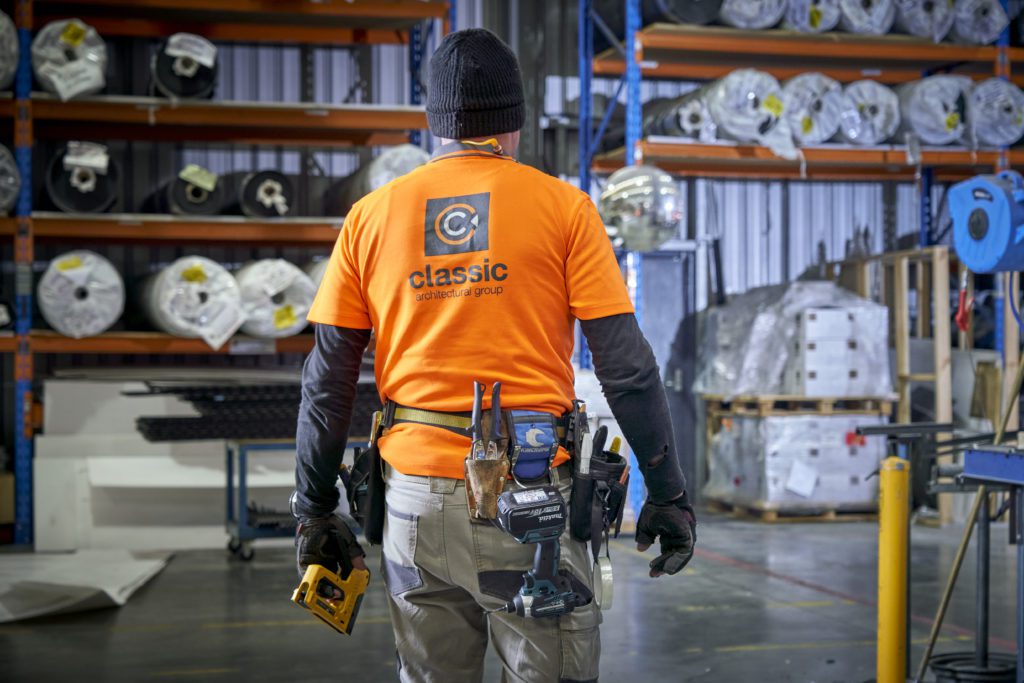
Classic supply and installation services give you the certainty you need.
Whether it’s a quick product replacement, a complete assessment or general maintenance and installation, our team can provide you with end-to-end service from consultation to supply and installation. If it’s a replacement, our large range and stock holding of floor and stair safety solutions ensure effortless matching with your existing product for a cohesive look.
Our friendly team of experts have worked with Facility Managers across all industries nationwide including education, health, industrial, office, residential, retail, sports & recreation, and community & cultural sectors. Keeping your maintenance on track with allocated budgets and scheduled completion dates, we’re here to keep you a step ahead!
To discuss your floor safety requirements or for more information, please contact our friendly team by calling 1300 244 377 today.
